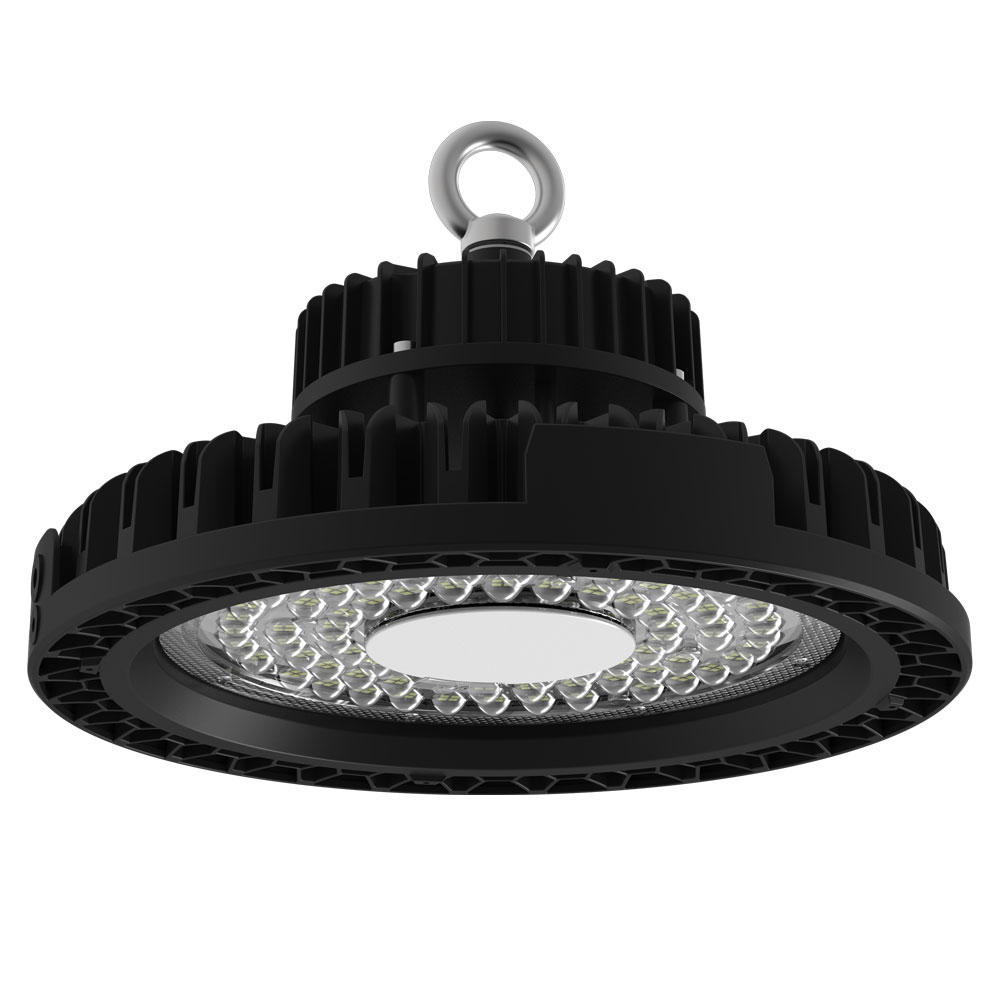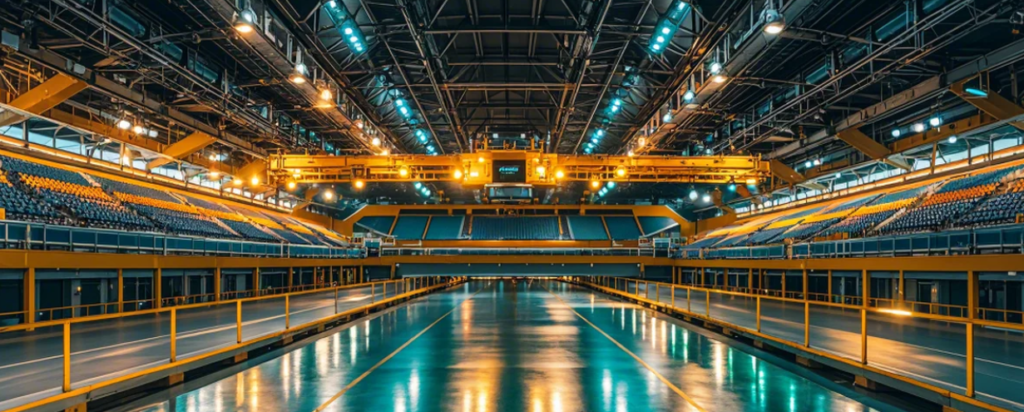Índice
AlternarIntrodução
A luz branca quente ou a luz branca fria é mais adequada às suas necessidades? A seleção entre luzes LED brancas quentes e brancas frias pode ter um grande impacto na funcionalidade, estética e disposição do seu espaço. Este artigo explica como escolher o branco quente e o branco frio em áreas residenciais, de trabalho ou industriais. Descubra como as lâmpadas LED energeticamente eficientes da LedRhythm soluções de iluminação em várias temperaturas de cor podem transformar o seu espaço.
Luz branca fria: O que é?
Uma temperatura de cor de iluminação branca fria, normalmente na gama de 5000K a 6500K, proporciona um aspeto claro e brilhante. Como replica a luz natural do dia, é perfeita para áreas que precisam de ser muito visíveis e produtivas.
A luz branca fria não é adequada para quartos ou áreas de relaxamento, uma vez que pode afetar a secreção de melatonina e interferir com o sono.
| Aspeto | Descrição |
|---|---|
| Temperatura de cor | Normalmente entre 5000K e 6500K |
| Cor clara | Branco frio com uma tonalidade azulada |
| Efeito visual | Brilhante, nítido e energizante |
| Contraste | Alto contraste, melhora a visibilidade dos pormenores |
| Renderização de cores | Depende do produto; as versões de alta qualidade oferecem CRI 90+ |
Iluminação de branco quente: O que é?
A iluminação branca quente produz um brilho suave e amarelado com uma temperatura de cor que varia entre 2700K e 3000K. Produz um ambiente quente e acolhedor que é perfeito para casas e áreas de lazer.
| Aspeto | Descrição |
|---|---|
| Temperatura de cor | Normalmente entre 2700K e 3000K |
| Cor clara | Branco suave com uma tonalidade amarela ou âmbar |
| Efeito visual | Quente, acolhedor e relaxante |
| Ambiente | Cria um ambiente acolhedor e confortável |
| Renderização de cores | Normalmente elevado, com CRI entre 80 e 90+ |

Principal diferença entre branco frio e branco quente
As principais diferenças entre a luz branca fria e a luz branca quente reflectem-se na temperatura da cor, na perceção visual, nos cenários de aplicação e no impacto psicológico. Ver mais diferenças de temperatura de cor.
Temperatura de cor
- Branco quente: Tem uma temperatura de cor mais baixa, normalmente entre 2700K e 3500K. É semelhante à luz do sol ao amanhecer ou ao anoitecer, à luz de velas e à luz de uma lâmpada incandescente. A luz tem mais componentes vermelhos, amarelos e laranja, resultando num aspeto amarelado ou avermelhado.
- Branco frio: Tem uma temperatura de cor mais elevada, normalmente entre 5000K e 6500K. É semelhante à luz solar do meio-dia, com mais componentes azuis, resultando num aspeto azulado ou esbranquiçado.
Experiência visual e atmosfera
- Branco quente: Quente, confortável, relaxante e convidativo. Cria uma atmosfera suave, tranquila, romântica e caseira, evocando imagens de lareiras, jantares à luz das velas e salas de estar.
- Branco frio: Brilhante, claro, revigorante e concentrado. Cria uma atmosfera de eficiência, profissionalismo, limpeza e atenção, evocando imagens de hospitais, escritórios, laboratórios, fábricas e armazéns.
Cenários aplicáveis
- Branco quente: Ideal para áreas que requerem uma sensação de descanso e calor, como quartos, salas de jantar, cafés e qualquer ambiente onde uma tonalidade quente seja mais importante.
- Branco frio: Ideal para áreas que requerem uma visão clara e atenção concentrada, como cozinhas, casas de banho, escritórios, fábricas, hospitais e muito mais.
Outros
- Luz branca quente: Esta temperatura de cor assemelha-se à luz natural do sol após o pôr do sol, ajudando o corpo a segregar melatonina, promovendo o relaxamento e a preparação para o sono.
- Luz branca fria: Esta temperatura de cor está mais próxima da luz solar do meio-dia, suprimindo a produção de melatonina e promovendo o estado de alerta e a concentração. Embora seja ideal para dormir durante o dia, a exposição excessiva à luz branca fria à noite pode perturbar o sono.

Vantagens da iluminação branca fria
- Produtividade melhorada: Em escritórios e ambientes industriais, o tom brilhante das lâmpadas brancas frias aumenta a concentração e diminui o cansaço.
- Representação de cores reais: Perfeito para ambientes que exigem precisão, como estúdios de design ou hospitais.
- Aplicações versáteis: Adequado para lâmpadas LED de branco frio, globos de luz de branco frio e projectores de branco frio.
Vantagens da iluminação branca quente
- Ambiente confortável: Os ambientes relaxantes são ideais para o brilho acolhedor de lâmpadas quentes.
- Eficiência energética: As modernas lâmpadas LED brancas quentes são eficientes em termos energéticos sem sacrificar o conforto.
- Benefícios para a saúde: Promove um sono melhor e o relaxamento ao reduzir a exposição à luz azul.
Seleção de branco quente ou branco frio para vários espaços
Iluminação doméstica
Utilize luzes brancas quentes nos quartos e nas salas de estar para criar um ambiente acolhedor.
Para melhorar a visibilidade, utilize lâmpadas de luz branca fria nas casas de banho e cozinhas.
Iluminação de escritório
Instale lâmpadas LED brancas frias para manter a concentração e a produtividade.
Evite lâmpadas quentes, que podem induzir sonolência em vez de alerta.
Usos industriais e comerciais
As lâmpadas LED brancas frias são essenciais para lojas, armazéns e instituições médicas.
A iluminação branca quente melhora a experiência do cliente em hotéis e estabelecimentos comerciais.
Produtos de iluminação branca fria e quente da LedRhythm
A LedRhythm oferece produtos de iluminação LED de ponta, cada luz LED está disponível em branco quente ou branco frio, até 6500K.
Quer seja um especialista ou um novato na indústria da iluminação, sinta-se à vontade para contactar-nos. Podemos personalizar uma solução de iluminação completa para si em 24 horas.
Resumir
Ao escolher entre luz branca quente e fria, não compre apenas com base nas suas preferências pessoais. Deve ter em conta o seu ambiente e as suas necessidades para garantir a melhor experiência de iluminação.
Lembre-se que os LED brancos quentes criam uma atmosfera confortável e tranquila, enquanto os LED brancos frios aumentam a concentração e a produtividade.
As pessoas também perguntam
O que é melhor para um espaço de trabalho: branco frio ou branco quente?
As luzes LED brancas frias são melhores para espaços de trabalho devido à sua luz brilhante e nítida que aumenta a concentração e a produtividade.
Posso misturar iluminação branca fria e branca quente na mesma divisão?
Sim. A mistura de luz branca fria e quente na mesma divisão é comum no design de iluminação moderno.
Desde que a iluminação esteja devidamente dividida, as áreas estejam claramente definidas e as diferenças de temperatura da cor não sejam abruptas, pode efetivamente melhorar o ambiente e a funcionalidade do espaço.
As luzes LED brancas frias são mais eficientes em termos energéticos do que as brancas quentes?
Na mesma luz, os LED brancos frios são geralmente ligeiramente mais eficientes em termos energéticos do que os brancos quentes. Isto deve-se ao facto de os brancos frios serem mais eficientes, mas a diferença é tão pequena que as poupanças reais são mínimas.
A luz branca suave e a luz branca quente são muito próximas?
De facto. A luz branca suave e a luz branca quente são muito semelhantes e quase equivalentes. No entanto, a luz branca quente tem uma temperatura de cor ligeiramente superior e uma tonalidade ligeiramente mais amarela.








